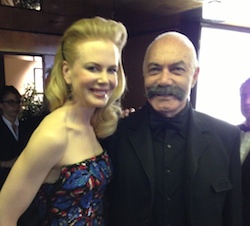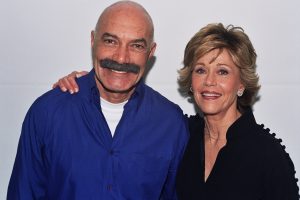Another 1980s film that reconstructed the War times in a small town was “Racing with the Moon,” directed by Richard Benjamin and written by Steve Kloves, with wonderful performances from the young Sean Penn and Elizabeth McGovern.
In this film, which suffers from an incoherent text, the most important protagonists are the train and railroad tracks. The narrative begins with its teenage hero, Henry “Hopper” Nash (Sean Penn) walking down the railroad tracks. A soft rumble is heard, followed by a train whistle. The rumble bursts into an explosion as a big black smoking train is approaching. Two boys put their penny coins on the rail, a recurrent image in small-town films, evoking the childhood of many Americans. Hopper and his friend Nicky play more dangerous games: to hitch rides, they chase freight trains, grabbing hold of a railing.
Like Raggedy Man, it is set in l942, but in place of Texas, it is Point Muir, a small (fictional) coastal town in Northern California. Hopper’s loving parents provide him with good education: His mother hopes he’ll become a concert pianist, though his interest is in jazz. Hopper’s best friend from school, Nicky (Nicholas Cage), is a reckless lout, who gets into a mess, but expects Hopper to get him out of it. A product of one-parent family, Nicky’s working-class father abuses him mentally and physically. He feels much more at home at the Nash’s house, where he is accepted as a second son. The film follows the two youngsters’ friendship during their last six weeks in town, from Christmas to February 11, the date of their enlistment in the Marines.
The War intrudes on the daily lives of all citizens. Mr. Nash, a gravedigger, is assigned with the ceremonial burials of servicemen. The local movie house shows newsreels and combat films to boost the morale of the home front. The Bowling Alley’s is full of soldiers dating local girls, and in the local hospital there are many wounded soldiers. In their leisure, the two boys work at Al’s Bowling Alley, where they hand set pins, and fight with their foes, the Gatsby boys from the wealthier side of town.
The issue of social class is superficially used, when Hopper falls for Caddie (Elizabeth McGovern), who works as a cashier in the local movie house. Hopper assumes she is a rich girl, because she lives in a big white mansion surrounded by gates. But Caddie is afraid to reveal her identity–that her mother is a housekeeper.
In Racing with the Moon, Nature is represented by an abandoned tavern in the woods, Hopper’s “hiding” place. The film features the obligatory scene, swimming in the nude–and making love–in a gelid lake. Hopper and Caddie’s pure but passionate relationship is contrasted with that of Nicky and Sally, overtly sexual but not romantic.
To propel action and introduce some tension in an otherwise weak and listless script, the film resorts to melodramatic devices from other small-town films. There is Sally’s pregnancy, which is used to show Nicky’s insensitivity and to create strain in the boys’ friendship. Then, there is Caddie’s mistaken identity, which lacks any dramatic effect, because Hopper’s love goes beyond class; he really does not care about her
origins. Moreover, there is credibility problem: Could it be that in a small town, Caddie’s background would remain obscure
What Racing with the Moon captures well is the boys’ farewell to town (Nicky does not plan to return), and to their childhood. In the last scene, they play for the last time their dangerous game. Racing for the departing train, they grab onto the railing of the last car, then turn and wave goodbye. The transition from childhood’s innocence into adulthood is dramatically captured in this brief moment. Screenwriter Steven Kloves has described the film as youth going “from a world of light into a world of darkness.”
Based on a conceptual idea, the film pays little attention to characterization or narrative pull. Like Raggedy Man, the screenplay is both predictable and anachronistic, confusing conventions of the l940s with those of the l980s. The passionate lovemaking between Hopper and Caddie, swimming in the nude, is not likely to have occurred in the l940s.
The film was shot in the rugged coast of Mendocino, a locale used by other small-town films, East of Eden, The Russians Are Coming, and Summer of ’42. The redwood forests, rocky cliffs, and the wild flowers of the coastal fields, often upstages the story, particularly its quiet stretches. One of the film’s recurrent images shows Hopper or Caddie walking across the open fields. Caddie is first introduced dancing barefoot on top of a cliff, projecting the freedom of the outdoors.
The film’s most crucial scenes occur outdoors: The confrontation between Hopper and Nicky, in which their friendship is put to test, takes place at the railroad tracks. Later, Hopper takes Caddie to his hiding place. The town is not seen as stifling, but its inhabitants use Nature to establish their identities, test their egos, and examine their relationships with others. An idyllic evocation of coming of age, a theme of numerous movies, Racing with the Moon lacks the sentimentality associated with such works.
Though made on a relatively low budget (about 6 million), “Racing with the Moon” was not particularly successful at the box-office.










